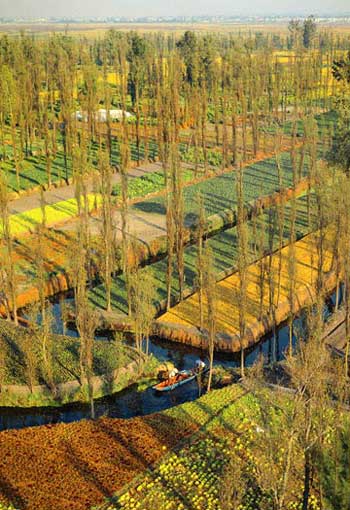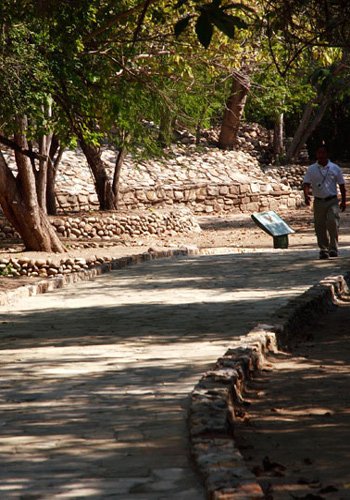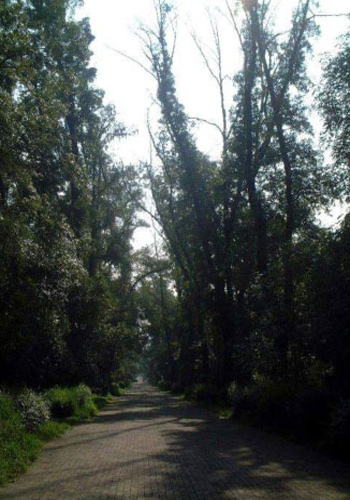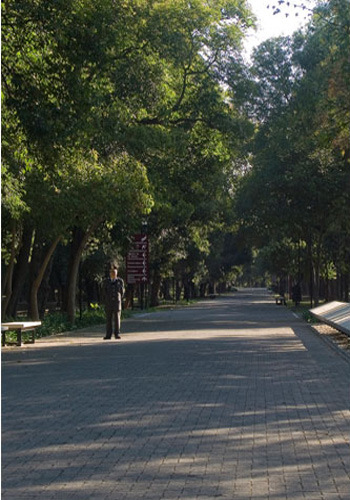Mario Schjetnan Dissects the Deeper Meaning of Place
Mexican landscape architect, architect, and urban designer Mario Schjetnan, FASLA, recently spoke at Harvard University Graduate School of Design. He is recognized for his built works that are fueled by a deep concern for the cities of his native Mexico.
GSD landscape architecture department chair Charles Waldheim, Affiliate ASLA, introduced Schjetnan as one of today's foremost landscape architects, and said the new appreciation of landscape architecture in Mexico can be greatly attributed to the efforts of Schjetnan and his firm, Grupo de Diseño Urbano.
The majority of Schjetnan's work is in Mexico and Latin America, where he has grown awareness of the field by demonstrating the many ways it serves growing urban centers, while also reaching beyond the discipline for the information to do the work cities need.
He has an unusual profile: he is Mexico's leading landscape architect and internationally-recognized.
That evening when he was speaking at Harvard, Schjetnan outlined a set of principles that "establish the condition to immerse ourselves in the profession". Along with "nature of place, collaboration, sustainability, and culture/history/precedent" he lists "inter-disciplinarity" and the "conceptual continuum".
For an example of inter-disciplinarity, he points to innovation in the sciences, which often comes out a mix of different disciplines. "Inter-disciplinarity creates these new hybrids we are working in." He acknowledges that no project addresses just one principle in isolation.
Schjetnan used his work at Parque Ecológico Xochimilco in Xochimilco, Mexico to talk about the nature of place. For Schjetnan, any project on a historical or natural site requires finding the "deep meaning of place," the "starting point" from which to begin a project. "It encompasses the aesthetic, ecological, and the poetic…"
This approach has particular relevance in a country with so many archeological sites. (At one point that evening Schjetnan even related a bit of a joke: Once asked how many archeological sites Mexico had, "one of the best anthropologists" answered with: "only one; it's called Mexico.")
Xochimilco, one of Mexico's historic sites, required Schjetnan to really immerse himself. It led him to discover the deep tradition of Mexico's "chinampas," an agricultural system based on raised plots of fertile land within the lake beds of the Valley of Mexico (see image above). Drawing on this tradition, which Schjetnan calls "the best technological invention of pre-hispanic Americas," the new park design at Xochimilco reimagines their original use within contemporary water infrastructure, using the forms of these "marvelous islands created by man" to filter and pump water back into the lake. Schjetnan is making traditions visible and viable.
In the case of Parque Eco-Arqueológica Copalita in Huatulco, Mexico, the team, on its journey to discover the nature of place, created a new park along with an entirely new understanding of the relationship between archeology and environmental history. The archeological eco-park marries the two and no longer sees vegetation as being destructive. In practice, this new understanding has meant training the staff not to remove old growth trees from the precious pyramids.
While not removing trees may be the "right" thing to do in one scenario, in another circumstance it may be the wrong thing. Take the firm's work in the forest of Chapultepec Park in Mexico City. Schjetnan tells a fascinating story or how thinning the forest for health — yes, that means removing trees in this case — had to be done first on a nearly invisible demonstration plot in order to gain public support. Otherwise, he might once more risk being accused of cutting down trees. Schjetnan has the wisdom to let the vegetation be the agent of design.
A more recent project is his firm's first large-scale contaminated, post-industrial site: Jardín Natura Parque Bicentenario in Ciudad de México. With a slab foundation dominating the site, the garden's topography is entirely shaped by the bio-regions' soil profiles. The more soil a tree needs, the higher the ground.
Schjetnan excitedly walked the auditorium through a detailed longitudinal section that cuts through each of the distinct bio-regions of the garden. His garden demonstrates not only where but how trees grow. What a novel way to refresh the role of a botanical garden in a city where not only the buildings but also the ground are rising up to the sky.
This guest post is by Lara Mehling, Student ASLA, Master's of Landscape Architecture candidate, Harvard University Graduate School of Design







